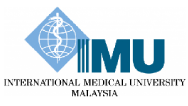Mentoring in the clinical setting: Process, issues and challenges
Author: Sivalingam Nalliah
ABSTRACT
Mentoring in academic medicine requires the trained mentor to commit time, purpose and dedication for the personal and professional development of three categories of protégés or mentees i.e. medical students, the clinician-trainee and the clinical-educator. Conventionally, assigned mentors monitor the progress of the first two categories of personnel as their career pathway is clearly defined. On the other hand the clinician–educator in academic medicine could be a scientist or a career clinician expected to contribute to medical education activities and research. The clinician-educator has grown in complexity as he multitasks in providing clinical care, assists in delivering the medical curriculum and is expected to do research and publish. Although there is dearth of research in mentoring the clinician-educator, it is clear that mentored clinical-educators are more productive by way of scientific publications. Trained mentors are expected to identify the needs of the mentee with regards to the level of his career development and his aptitude to move up the academic ladder, successfully nurturing the maturation process. Processes of mentoring in the clinical setting, attributes of the successful mentor and facilitating the mentee in overcoming challenges in academic medicine are discussed.
Keywords: Mentor, clinician-educator, clinical setting.
Citation: IeJSME 2012 : 6(1) 4-10

